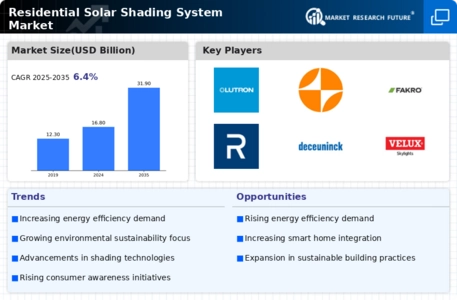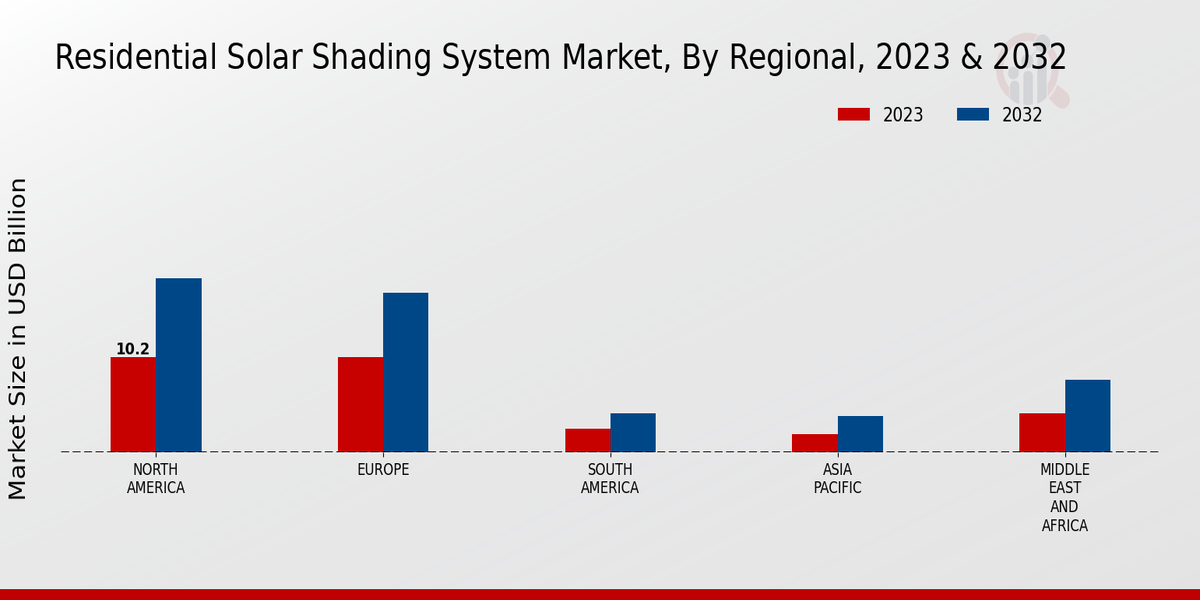Market Growth Projections
The Global Residential Solar Shading System Market Industry is projected to experience substantial growth in the coming years. By 2024, the market is expected to reach 16.8 USD Billion, with further expansion anticipated as it approaches 31.9 USD Billion by 2035. This growth trajectory indicates a compound annual growth rate of 6.02% from 2025 to 2035. Such projections reflect the increasing adoption of solar shading technologies, driven by factors such as energy efficiency, technological advancements, and government incentives.
Growing Demand for Energy Efficiency
The Global Residential Solar Shading System Market Industry is experiencing a notable surge in demand for energy-efficient solutions. Homeowners are increasingly seeking ways to reduce energy consumption and lower utility bills. Solar shading systems, which effectively minimize heat gain and glare, are becoming essential in achieving these goals. In 2024, the market is projected to reach 16.8 USD Billion, driven by the rising awareness of energy conservation. This trend is likely to continue, as consumers prioritize sustainable living and energy efficiency, further propelling the market's growth.
Government Incentives and Regulations
Government policies and incentives are significantly influencing the Global Residential Solar Shading System Market Industry. Many countries are implementing regulations that promote the use of energy-efficient technologies in residential buildings. Incentives such as tax credits, rebates, and grants encourage homeowners to invest in solar shading systems. These initiatives not only support environmental goals but also stimulate market growth. As the global focus on sustainability intensifies, the demand for solar shading solutions is expected to rise, contributing to the market's projected growth to 31.9 USD Billion by 2035.
Increased Awareness of Climate Change
The growing awareness of climate change and its impacts is driving the Global Residential Solar Shading System Market Industry. Homeowners are becoming more conscious of their carbon footprints and are actively seeking solutions to mitigate environmental effects. Solar shading systems are recognized for their ability to reduce energy consumption and greenhouse gas emissions. This heightened awareness is likely to lead to increased adoption of solar shading technologies, as consumers prioritize eco-friendly options. Consequently, the market is poised for substantial growth as more individuals recognize the importance of sustainable living.
Technological Advancements in Solar Shading
Technological innovations play a pivotal role in the Global Residential Solar Shading System Market Industry. The introduction of smart shading solutions, which can automatically adjust based on sunlight intensity and weather conditions, enhances user experience and energy savings. These advancements not only improve functionality but also integrate seamlessly with existing home automation systems. As a result, the market is expected to witness a compound annual growth rate of 6.02% from 2025 to 2035. This growth is indicative of the increasing consumer preference for high-tech, efficient solutions that contribute to energy savings and comfort.
Rising Construction and Renovation Activities
The Global Residential Solar Shading System Market Industry is benefiting from the rising construction and renovation activities worldwide. As new residential projects emerge and existing homes undergo renovations, there is a growing opportunity for the integration of solar shading systems. Builders and architects are increasingly incorporating these solutions into their designs to enhance energy efficiency and aesthetic appeal. This trend is expected to contribute to the market's expansion, as homeowners seek to improve their living spaces while adhering to energy-efficient standards.










